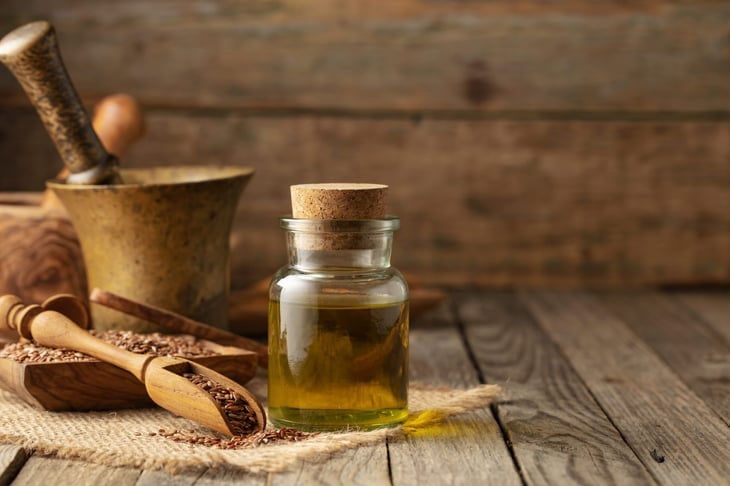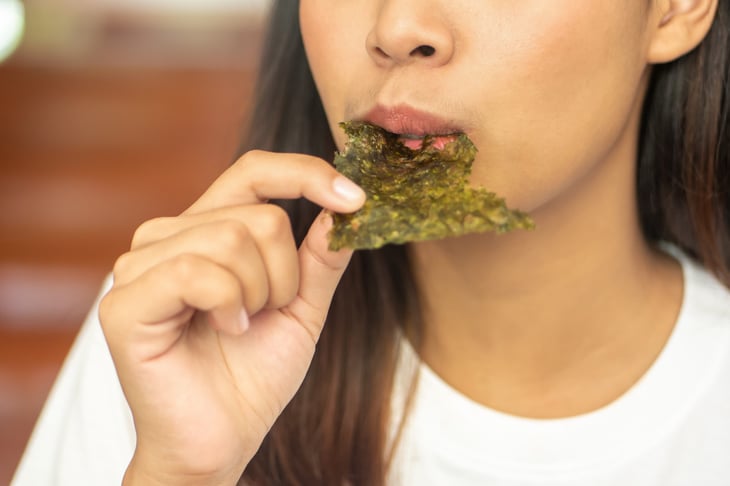
Omega-3 fatty acids are considered essential, and not just because your body can’t produce them on its own. Omega-3 fatty acids are found in almost every cell of the body. They help build cell membranes and promote the function of cell receptors within the cell membrane.
Omega-3 fats also help produce the hormones responsible for blood clotting, arterial contraction and systemic inflammation. And like all types of fats, omega-3s are necessary for the absorption of fat-soluble vitamins such as A, D, E and K.
If you’re pregnant or nursing, omega-3s may be especially crucial. Because omega-3 fatty acids are highly concentrated in the brain, they support the healthy development of a baby’s brain.
No matter what phase of life you’re in, it’s important that you get enough omega-3s in your diet. Yes, there are supplements you can take, but it’s always best to get your nutrients from food first. Food is much more regulated than dietary supplements, which makes it the safer, more nutritious choice.
Types of omega-3 fatty acids

There are three main types of omega-3 fatty acids:
- Alpha linolenic acid (ALA)
- Eicosapentaenoic acid (EPA)
- Docosahexaenoic acid (DHA)
ALA is considered an essential fatty acid because humans lack the enzymes needed to make it. EPA and DHA are technically considered conditionally essential fatty acids. The body is able to convert ALA into EPA, which then converts to DHA, but the conversion rate is low and insufficient. Some experts estimate that “only 5%-10% and 2%-5% of ALA in healthy adults is converted to EPA and DHA, respectively.” That means you must get almost all of these omega-3 fatty acids from your diet.
You’ll get ALA from plant-based foods. But for a more direct source of EPA and DHA, you’ll want to rely on marine sources. Marine sources can be animal- or plant-based, which can get confusing. So, to keep things clear and easy, we’ve highlighted the best food sources of omega-3 fatty acids. If you’re adding these foods to your daily diet, you can be sure you’re getting enough omega-3s.
1. Chia seeds

Chia seeds come from the plant Salvia hispanica L., which has been cultivated as a food source for thousands of years. Only recently, however, have chia seeds become a popular health food. What makes chia seeds so great? For one, they are the richest plant-based source of ALA. Chia seeds are also a complete protein, meaning they contain all nine essential amino acids.
To get your fill, add chia seeds to smoothies and oatmeal. Or, use chia seeds as an egg replacer in baked goods. Simply mix 1 tablespoon of chia seeds with 3 tablespoons of water, and let it sit for a while. The gel-like mixture offers the same consistency and binding properties as a whole egg.
2. Enriched eggs

Whole eggs naturally contain omega-3s, but it’s a minimal amount (around 30 milligrams per egg). To pump up their value, farmers have begun feeding their hens a diet rich in flaxseed, which translates to a higher fatty acid content in their eggs.
One popular brand claims each of their large eggs provides 125 milligrams of omega-3s. While 125 milligrams is not nearly as much as what you get from a 4-ounce serving of salmon, enriched eggs are still a good way to increase your overall omega-3 intake – especially for people who don’t eat fish.
3. Fatty fish

Certain types of fish are higher in omega-3 fatty acids, including salmon, mackerel, black cod, herring, bluefin tuna, whitefish, anchovies and sardines. The American Heart Association (AHA) recommends eating two servings of fatty fish per week. The key is to replace a serving of red meat or pork with a serving of fatty fish.
Note: One serving is 3 ounces of cooked fish or ¾ cup of flaked fish, such as canned tuna. Speaking of canned tuna, be sure to pick a variety packed in water to limit sodium and unnecessary calories. The same policy goes for anchovies, sardines and herring. The sodium content in certain canned and dehydrated foods can be bad for blood pressure.
4. Flaxseed

Flaxseed and flaxseed oil are excellent sources of ALA. In fact, just 1 tablespoon of flaxseed oil supplies 6,703 milligrams of ALA. The best part is it’s easy to incorporate flaxseed into your diet. You can mix whole flaxseeds or ground flaxseed into soups, smoothies and other recipes. Alternatively, try flaxseed oil as a salad dressing or stirred into a sauce. Flaxseed oil is also available as a supplement, usually in capsule form.
However, speak to your doctor before taking any supplements. This is especially true if you’re currently prescribed anticoagulants or anti-platelet medications, as flaxseed can potentially cause harmful interactions with these drugs.
5. Seaweed

Known as “the vegetable of the sea,” seaweed supplies several vitamins and minerals. It’s also the only plant that provides a direct source of EPA and DHA.
The concentration of omega-3s varies depending on the type of seaweed. However, researchers suggest red seaweed — specifically, Calliblepharis jubata — has the highest content of highly unsaturated fatty acids, with DHA making up 50% of its total fatty acid profile. Bonus: Red seaweed also contains certain types of sugars and fiber that have prebiotic properties known to support gut and colon health.
6. Walnuts

Walnuts provide more ALA than any other nut, and they’ve been linked to higher EPA levels. In a randomized study, participants consumed a moderate amount of walnuts daily (56 grams per day) for four weeks. This intervention led to increased omega-3 fatty acid profiles and a high conversion of ALA to EPA (>10%).
It was a small study conducted over a short period of time, but the results are interesting and deserve more exploration. Plus, there are a million other reasons to choose walnuts over other tree nuts, including the fact that they have a high ALA content, are a good source of magnesium and can potentially lower systolic blood pressure.





Add a Comment
Our Policy: We welcome relevant and respectful comments in order to foster healthy and informative discussions. All other comments may be removed. Comments with links are automatically held for moderation.